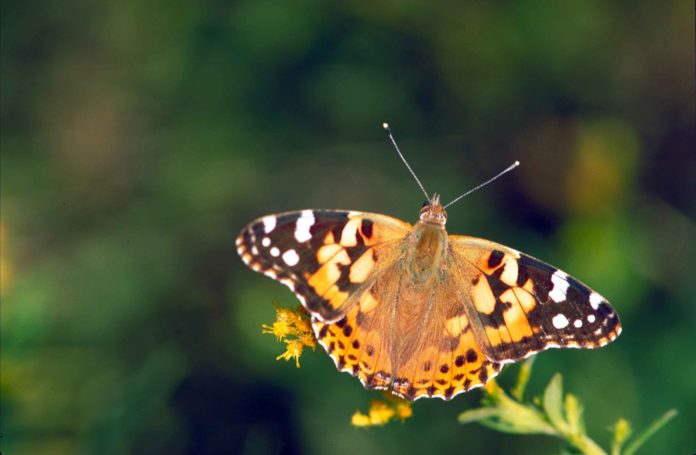The Painted Lady butterfly is now thought to perform the longest migratory journey of any butterfly species, knocking the Monarch butterfly from the top position.
It was already known that Painted Lady colonies travel from southern Europe to tropical Africa through the Sahara, but its fate beyond this journey has always been something of a mystery. Researchers theorized that the butterflies remained there or made a round-trip back to Europe, though neither scenario had been proven.
Using a clever form of tracking, researchers from the University of Ottawa have demonstrated that Painted Lady colonies do return in spring, traversing the punishing Sahara twice and setting a migratory record simultaneously.
On the trail of ‘signature’ hydrogen isotopes
Painted Lady butterflies – Vanessa Cardui – perform their seasonal migrations in pursuit of ideal climates and abundant resources on the other side. They are the most widely distributed butterfly species in the world, found in every continent besides Australasia and the Antarctic – hence, the alternate title of the ‘Cosmopolitan’ butterfly.
But tracking them is no mean feat. The team’s approach was to study the natal origins of the colonies by analyzing the composition of butterfly wing samples at several locations on the migratory route.
Hydrogen always has one proton in its nucleus, the characteristic that defines it as an element, but there are two stable variants of hydrogen in nature: a more common variant that has just a solo proton in its nucleus, and one with both a proton and a neutron. These variants are called isotopes, and the more common proton-only version is still called hydrogen, while the heavier proton+neutron isotope is called deuterium.
Hydrogen and deuterium are chemically indistinguishable, but the added neutron means that any molecules that contain deuterium are heavier. The ratio of hydrogen to deuterium in water varies by geographic location because heavier water evaporates more slowly and rains out more readily, making the ratio highly dependent on local weather patterns
Tracking hydrogen isotope ratios can therefore be used as a marker of migratory origin. When plants absorb water, the signature proportion of hydrogen isotopes is maintained, which carries on into the caterpillars that eat them, and ultimately, the adult butterflies they become.
These isotopes can then be analyzed via keratin in the wings of the butterflies, which is metabolically inert, and their proportion indicates where they grew up as caterpillars.
“It is difficult to study the movement of insects by means of observations, marking or radio tracking, since there are millions of individuals and they are very small,” says lead researcher, Gerard Talavera.
“This is why finding out where a butterfly grew up before undergoing metamorphosis by means of stable isotope analysis turns out to be extremely useful. It feels like magic.”
Descendants finish the journey of their parents
The team’s data shows that a considerable portion of the population remain in tropical Africa and those who return to colonize the Mediterranean are most likely offspring.
This multi-generational circuit totals 12,000 km in distance – approximately 2,000 km greater than that of the North American Monarch butterfly’s round trip.
The team notes that “[the colony] relies on both temperate and tropical habitats to complete their multi-generational cycle, an unprecedented adaptation for butterflies and for most migratory insects.”








































